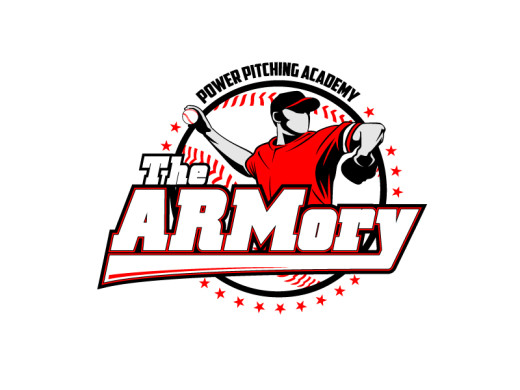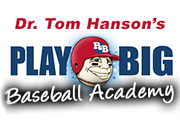| This article does not cite any references or sources. (December 2007) |

A catcher attempts to block a baserunner from reaching home plate
In baseball, blocking the plate was a common technique performed by a catcher to prevent a runner from scoring. The act of blocking the plate accounted for most of the physical contact in baseball.
By the rules of baseball, a runner has the right to an unobstructed path to a base. However, this right is not granted if the fielder guarding the base possesses the ball or is in the process of catching the ball.
The fielders guarding first through third base are unlikely to risk physical harm and will generally place themselves out of the path of the runner. The catcher guarding home plate, however, wears padding and a face mask and frequently placed his body as an obstacle between the runner and home plate. Since the runner did not have to worry about remaining on home plate, only tagging it, he would run at full speed in an effort to reach the final base. The speed of the runner combined with the fact that the catcher still has to tag him (unless the bases are loaded and the force play at home is still available) made for a dramatic play.
On December 11, 2013, the Major League Baseball Playing Rules Committee voted overwhelmingly to outlaw home-plate collisions between runners and catchers.[1]
Technique[edit]
Any time there is a close play at home plate, meaning the ball and runner reach the plate at the same time, the catcher squats in front of the plate to block a clear path. Unless he is willing to be tagged out, the runner who is faced with a blocked plate has two choices. He can:
- Attempt to slide around the catcher and avoid being tagged, or,
- Collide with the catcher with such force that the catcher has no chance of keeping possession of the ball.
The catcher soon becomes aware of which option the runner will choose. If the runner slides, the catcher will make a sweeping motion with his glove to quickly tag the runner out. Otherwise, the catcher must do everything he can to brace for the impact and keep the ball in his glove.
Risk[edit]
Both players place themselves at risk of injury when there is a close play at home plate, and though they wear padding, catchers are more likely to be injured than runners. Catchers generally have bad knees due to the squatting stance they take at the plate. A catcher’s knees are also closest body part to an incoming runner, and there is a chance of an ACL injury to the catcher. Other injuries include bruises and concussions.
In one infamous incident, Cleveland Indians catcher Ray Fosse suffered a separated shoulder when Pete Rose intentionally collided with him on a play at the plate during the 1970 Major League Baseball All-Star Game. Rose was roundly criticized, since firstly, the game was an exhibition, and secondly, he could have easily slid around Fosse rather than colliding with him. Ultimately, the incident served to help build Rose’s “Charlie Hustle” reputation and Fosse, who had been having a phenomenal rookie season, was never quite the same after the play.
Rule Difference by Level[edit]
Different levels of baseball have instituted different rules in regards to collisions at home plate or on the bases, in part because of the Fosse-Rose collision and other instances where athletes have been injured or suffered concussions as a result of violent contact between runner and fielder.
In high school, the “malicious contact” rule prevents collisions at home plate or elsewhere on the field. The defense is prohibited from initiating flagrant contact with the base runner while the offense, in turn, is required to attempt to avoid significant contact, often through the use of a slide. If the defense violates, the ball is dead and the offender ejected as the umpire awards penalties that in his/her judgment will nullify the act of malicious contact. If the offense violates, the ball is dead, the offender declared out and then ejected from the game.
In college, the “flagrant collision” rule discourages, but does not prohibit, collisions at home plate and on the bases. Instead, only “unnecessary and violent” collisions are outlawed. While defensive players are allowed to block the plate/base with clear possession of the ball, offensive players must take steps to ensure contact with the fielder is legal—for instance, it must be below the waist. Violations of this rule carry similar penalties to the high school malicious contact rule.
In professional baseball—MLB—collisions at home plate have been legal and were unaddressed since the game’s inception through 2013. On December 11, 2013, the MLB Rules Committee proposed a rules change that would outlaw the plate collision by dictating what both the defensive and offensive players may and may not do in such a situation.[2] If approved by the owners and Players’ Association, the rule will take effect prior to the 2014 MLB season. This establishes home plate with similar regulations as other bases in regards to obstruction (for the catcher) and interference (for the runner).
In Finnish baseball, the runner is considered tagged and out in case of him/her still running to base (and not yet arriving there) and defending player holding the ball while touching the target base simultaneously. In this case no physical contact is necessary to avoid injuries and the base umpire will call the runner out by raising a sign with letter X and referee whistles twice. In Finnish baseball player who is called out is literally called either “dead” or “burned.”
References[edit]
- ^ Hagen, Paul (December 11, 2013). “MLB votes to eliminate home-plate collisions”. MLB.com. Retrieved December 12, 2013.
- ^ Imber, Gil. “MLB Rules Committee Approves HP Collision Ban”. Close Call Sports/Umpire Ejection Fantasy League. Retrieved 12 December 2013.
This article uses material from the Wikipedia article blocking the plate, which is released under the Creative Commons Attribution-Share-Alike License 3.0.








